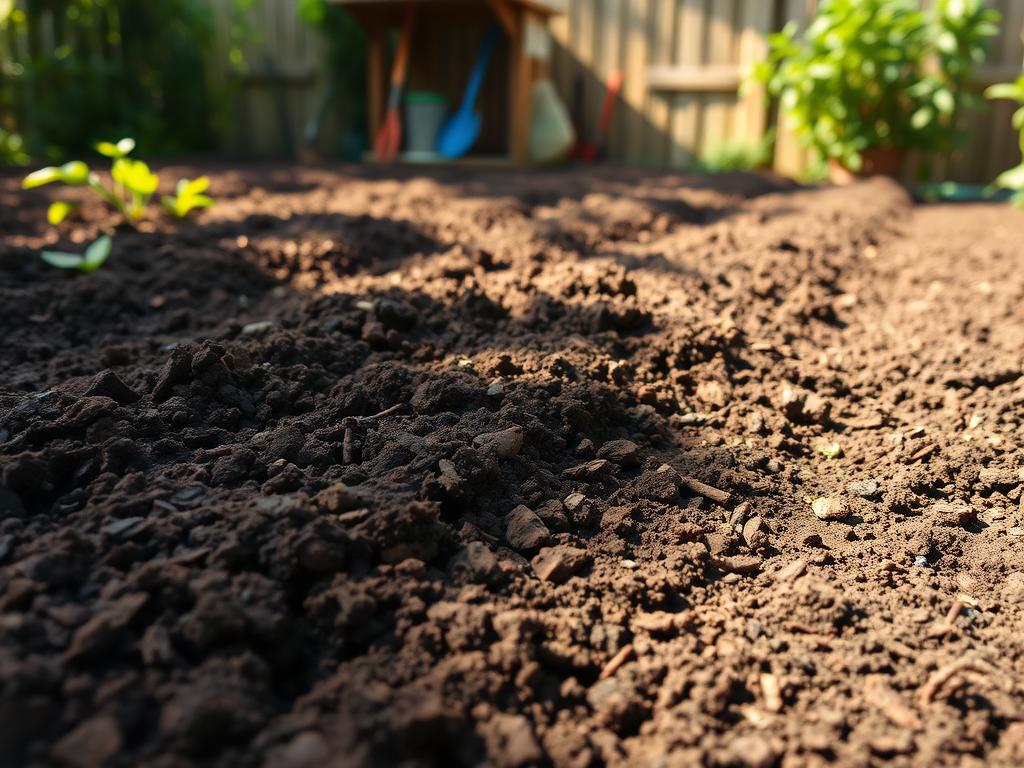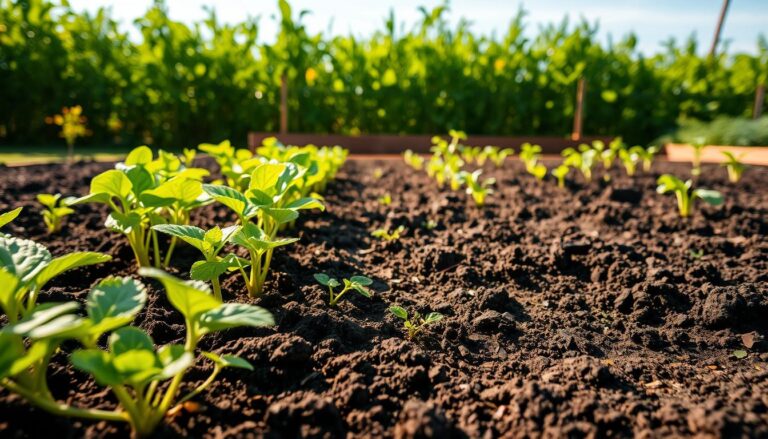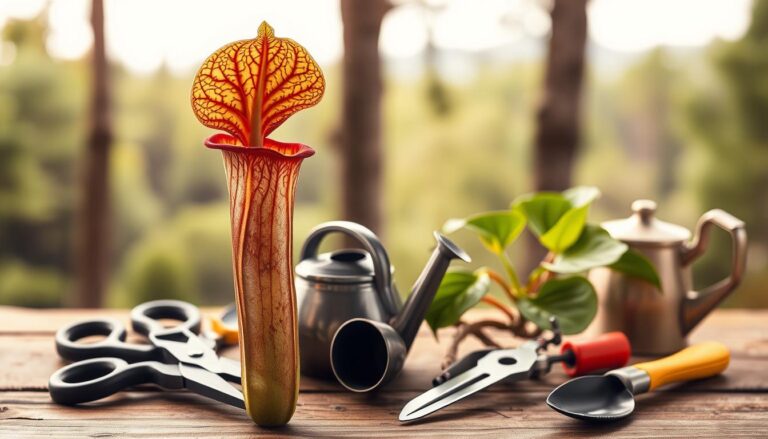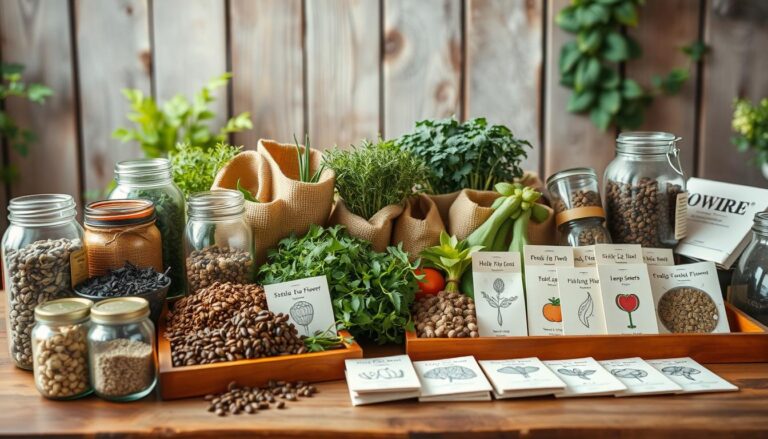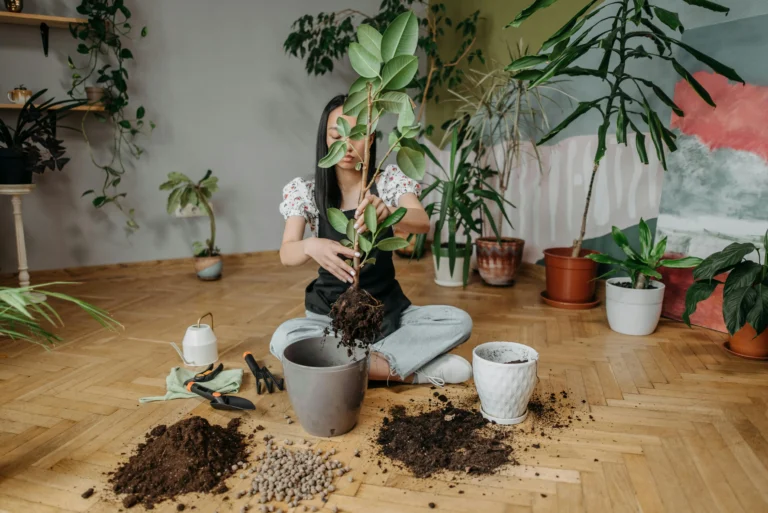Cultivate a Bountiful Harvest with the Best Vegetable Garden Soil
Growing a thriving garden is a rewarding experience, but it requires more than just planting the right seeds. The foundation of a successful harvest lies beneath the surface – in the soil. Understanding the complex mix of minerals, organic material, water, and air that makes up your soil is crucial for nurturing healthy plants.
By prioritizing soil quality and preparing it properly, you can prevent common garden problems and reduce the need for interventions later in the growing season. This comprehensive guide will walk you through the process of understanding soil composition, testing methods, preparation techniques, and maintenance practices to ensure a bountiful harvest.
Table of Contents
Understanding the Importance of Quality Soil
The health and productivity of your vegetable garden are directly tied to the condition of its soil. Quality soil is essential for providing the necessary nutrients and support for plant growth.
Why Soil Matters for Vegetable Growth
Soil is more than just a medium for holding plants in place; it’s a complex ecosystem that supports plant life. The presence of essential nutrients and organic matter in the soil ensures that your plants get what they need to grow. A well-structured soil promotes healthy root development, adequate water retention, and sufficient aeration, all of which are critical for vegetable growth.
The Three Components of Healthy Soil: Structure, Fertility, and Biology
Healthy soil is composed of three critical components: physical structure, chemical fertility, and biological activity. The physical structure affects drainage, aeration, and root penetration. Soil fertility refers to the presence of essential nutrients and organic matter, which are vital for plant nutrition. The biological component includes microorganisms, earthworms, and other beneficial creatures that contribute to soil health.
| Component | Description | Importance |
|---|---|---|
| Physical Structure | Affects drainage, aeration, and root penetration | Critical for root growth and water management |
| Chemical Fertility | Presence of essential nutrients and organic matter | Essential for plant nutrition |
| Biological Activity | Includes microorganisms, earthworms, and other beneficial creatures | Contributes to soil health and fertility |
As Charles Dowding, a renowned gardening expert, once said, “Soil is a living entity, teeming with life and full of potential.”
“Soil is a living entity, teeming with life and full of potential.”
Understanding and managing these components is key to creating optimalsoilfor your vegetable garden.
The Science Behind Vegetable Garden Soil
To cultivate a thriving vegetable garden, it’s essential to grasp the science underlying your soil. The characteristics of your garden soil significantly influence the health and productivity of your vegetables.
Soil Composition: Sand, Silt, and Clay
Soil composition is a critical factor in determining its overall quality. It is made up of sand, silt, and clay, each contributing differently to the soil’s structure and fertility. A balanced mix of these components is ideal for vegetable gardening.
Understanding Soil pH and Its Impact on Vegetables
The pH level of your soil affects the availability of nutrients to your vegetables. Most vegetables prefer a slightly acidic to neutral soil pH, ranging from 6.0 to 7.0. Understanding and adjusting your soil’s pH can significantly impact your garden’s productivity.
The Role of Organic Matter in Garden Soil
Organic matter, such as compost, plays a vital role in improving soil health. It enhances the soil’s structure, increases its water retention capacity, and provides essential nutrients. Adding organic matter is a key step in creating a fertile and productive garden soil.
| Soil Component | Function | Benefit to Vegetables |
|---|---|---|
| Sand | Improves drainage | Prevents waterlogged soil |
| Silt | Retains moisture and nutrients | Supports healthy growth |
| Clay | Provides nutrients and structure | Enhances soil fertility |
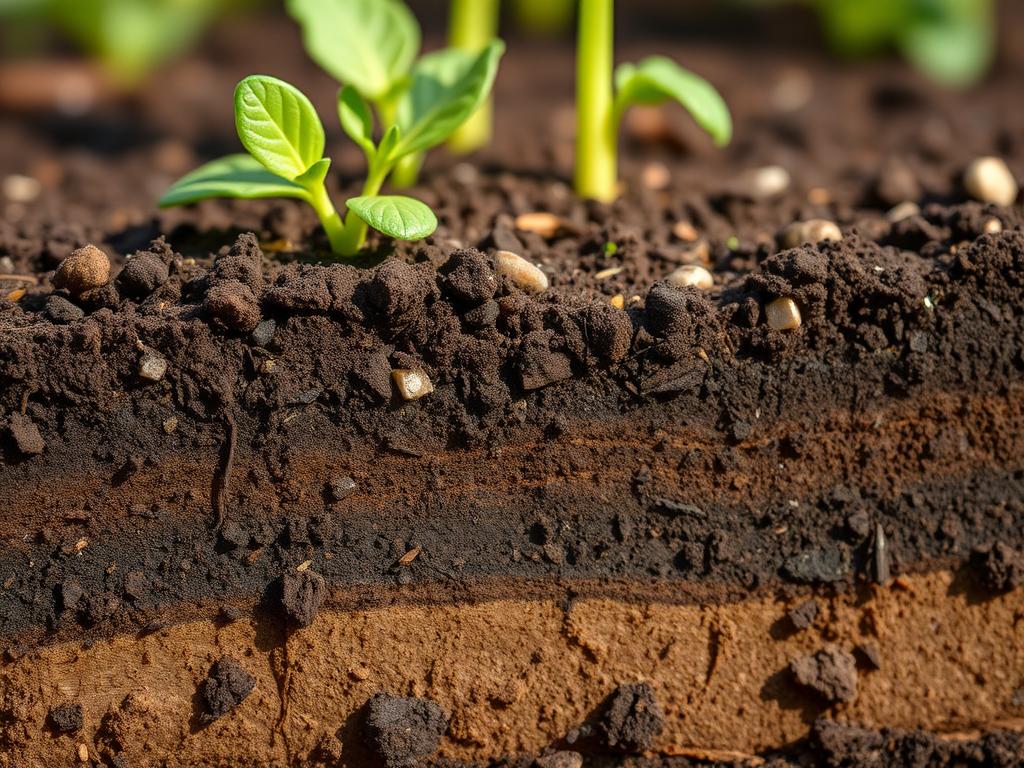
Types of Soil for Vegetable Gardens
The right soil type is the foundation upon which a successful vegetable garden is built. Different soils have unique characteristics that affect their ability to support vegetable growth.
Loamy Soil: The Gold Standard
Loamy soil is considered ideal for vegetable gardens due to its balanced composition of sand, silt, and clay. It retains moisture well, drains excess water, and is rich in nutrients. This balanced structure supports healthy root growth and is generally easy to work with.
Sandy Soil: Benefits and Limitations
Sandy soil drains quickly and warms up fast in spring, which can be beneficial for early planting. However, it lacks nutrients and moisture, requiring frequent fertilization and watering. Adding organic matter can improve its fertility and water-holding capacity.

Clay Soil: Working with Heavy Soil
Clay soil is dense and retains a lot of water, which can be challenging for root growth. However, it’s rich in nutrients. To improve clay soil, add organic matter to enhance its structure and drainage. This makes it more suitable for a variety of vegetables.
Silt Soil: Characteristics and Management
Silt soil is smooth and has medium-sized particles. It holds more water than sandy soil but less than clay, with moderate nutrient retention. Silt soil is fertile and easy to work with, making it suitable for many vegetables. However, it can be prone to compaction. To manage silt soil effectively, maintain its structure by adding organic matter and avoiding excessive tilling.
Testing Your Garden Soil
Soil testing is a critical step in preparing your garden for the growing season. It helps you understand the nutrients and pH levels in your soil, allowing you to make informed decisions about amendments.
DIY Soil Testing Methods
You can start by using DIY soil testing kits available at most gardening stores. These kits can give you a basic understanding of your soil’s pH and nutrient levels. However, they may not provide a comprehensive analysis.
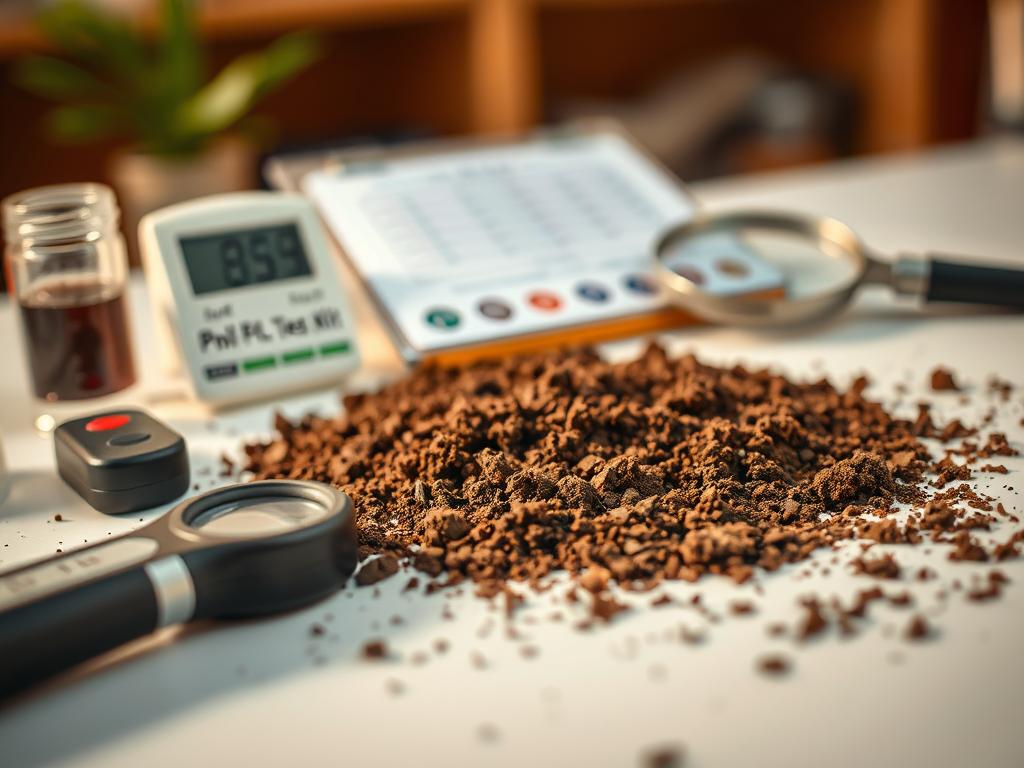
Professional Soil Tests: What They Tell You
For a more detailed analysis, consider sending a soil sample to a professional laboratory or using extension services. A comprehensive soil test measures pH, macro and micronutrients, organic matter content, and sometimes soil texture. This information helps you understand your soil’s fertility and guides you in making targeted amendments to improve soil health.
Professional soil tests provide the most accurate basis for soil amendment decisions, helping you optimize your garden’s soil for better vegetable growth.
Preparing Your Vegetable Garden Soil
The key to a thriving vegetable garden lies in the preparation of the soil, a process that requires careful consideration. Proper soil preparation ensures that your vegetables have the best chance to grow healthy and strong.
When to Prepare Soil for Planting
It’s best to prepare your soil several weeks before planting. This allows any amendments to integrate into the soil, improving its structure and fertility. For most gardens, preparing the soil in early spring or fall is ideal.
Breaking Ground: Tilling vs. No-Till Methods
When it comes to breaking ground, you have two main options: tilling and no-till methods. Tilling can help loosen compacted soil and mix in amendments, but it can also disrupt soil biology. No-till methods preserve soil structure and organisms but may require more planning to manage weeds and amendments.

Removing Debris and Weeds
Clearing your garden bed of debris and weeds is essential. These can compete with your vegetables for water, nutrients, and light. Removing them ensures that your vegetables have the resources they need to thrive.
Initial Soil Amendments Based on Soil Type
The type of amendments you need depends on your soil type. For sandy soils, adding organic matter can improve water and nutrient retention. Clay soils benefit from additions like coarse sand or gypsum to improve drainage, while compost can enhance nutrient content.
| Soil Type | Amendment | Benefit |
|---|---|---|
| Sandy | Organic Matter | Improved water and nutrient retention |
| Clay | Coarse Sand or Gypsum | Improved drainage |
| Silt | Organic Matter | Enhanced structure and drainage |
Understanding yoursoiltype and its needs is crucial for applying the rightamendments.
Creating the Best Vegetable Garden Soil Mix
A well-crafted soil mix is the foundation of a thriving vegetable garden, providing the necessary nutrients and structure for optimal growth. To create an ideal mix, you need to consider several factors, including the type of vegetables you’re growing, the existing soil composition, and the amendments needed to enhance its fertility and structure.
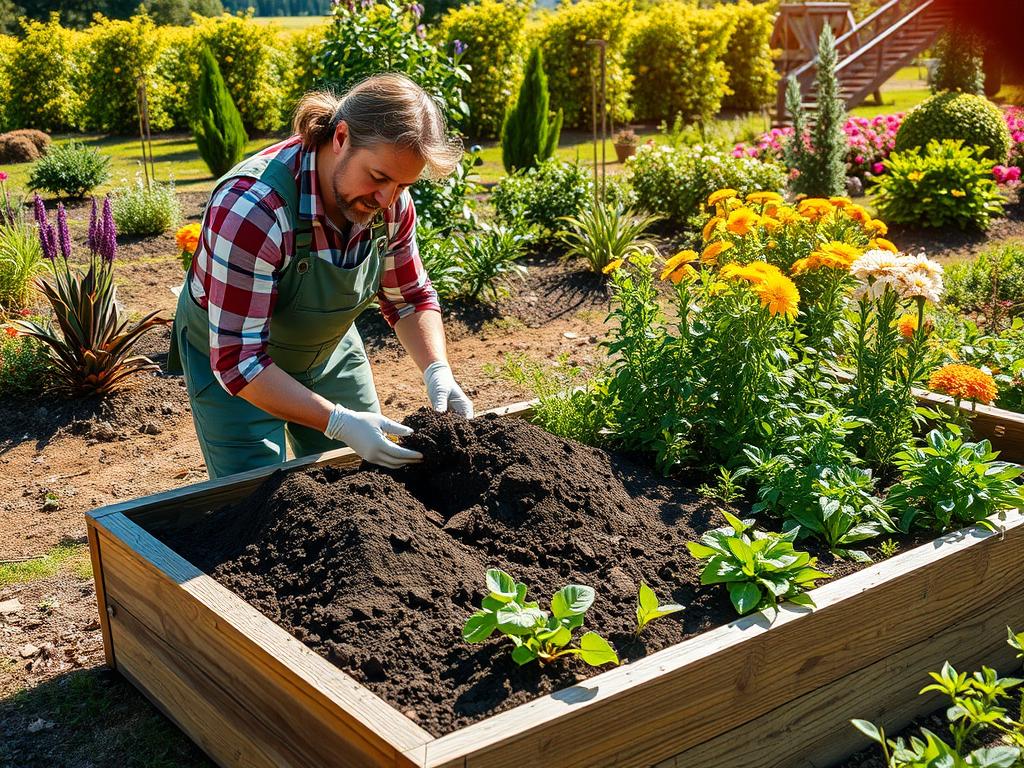
Mel’s Mix: The Square Foot Gardening Approach
Mel’s Mix is a renowned soil blend developed for square foot gardening. It consists of 1/3 peat moss or coconut coir, 1/3 vermiculite, and 1/3 compost. This mix provides excellent drainage, aeration, and nutrient supply, making it ideal for intensive vegetable gardening.
The “Perfect Soil Recipe”: 50-30-20 Formula
Another approach to creating a vegetable garden soil mix is the 50-30-20 formula, which involves mixing 50% topsoil, 30% compost, and 20% perlite or vermiculite (or other organic matter). This blend offers a balanced mix of nutrients, structure, and drainage.
Working with Bagged Soil: Pros and Cons
Using bagged soil can be convenient, especially for small gardens or raised beds. The pros include ease of use and a consistent product. However, it can be more expensive than sourcing materials in bulk. When using bagged soil, look for mixes specifically labeled as “vegetable garden soil” or “raised bed soil” to ensure they meet your needs.
Budget-Friendly Soil Mix Options
Creating a quality soil mix doesn’t have to break the bank. One cost-effective method is to use a 50/50 blend of compost and topsoil. You can also adopt the “Hugelkultur-inspired” method by placing logs and woody debris at the bottom of raised beds, reducing the volume of soil needed and creating a nutrient-rich environment as the materials decompose.
To further reduce costs, consider sourcing organic materials from local community resources, such as fallen leaves or garden debris. By being resourceful and using the right materials, you can create a high-quality soil mix without overspending.
Improving Different Soil Types for Vegetables
Optimizing your vegetable garden’s soil is fundamental to achieving a successful growing season. Different soil types present unique challenges and opportunities for improvement. By understanding the characteristics of your soil and applying targeted amendments, you can create a more favorable growing environment for your vegetables.
Amending Sandy Soil for Better Nutrient Retention
Sandy soils drain quickly but often lack the ability to retain nutrients. To improve sandy soil, incorporate organic matter like compost to enhance its water-holding capacity and nutrient retention. This amendment will help support healthy microbial activity and provide a more stable nutrient supply for your vegetables.
Breaking Up Clay Soil for Better Drainage
Clay soils can be dense and prone to waterlogging, which can be detrimental to vegetable roots. To improve clay soil, add organic matter and use techniques like tilling or no-till methods to break up the clay particles, enhancing drainage and aeration. This will create a more hospitable environment for root growth.
Enhancing Silt Soil for Optimal Growth
Silt soils are fertile but can be prone to compaction. To optimize silt soil, focus on maintaining its structure through regular additions of organic matter and minimizing compaction by avoiding excessive tillage or heavy foot traffic. This approach will help preserve its fertility and support healthy vegetable growth.
Working with Existing Garden Soil
When working with existing garden soil, it’s beneficial to assess its quality and identify areas for improvement. You can gradually enhance your soil through regular additions of compost and other organic amendments. Blending existing soil with new materials when creating raised beds can also be an effective strategy. By working with your existing soil, you can create a more sustainable and productive garden ecosystem.
Essential Soil Amendments for Vegetable Gardens
The right soil amendments can significantly improve the health and productivity of your vegetable garden. Understanding the different types of amendments and how to use them effectively is key to creating a thriving garden.
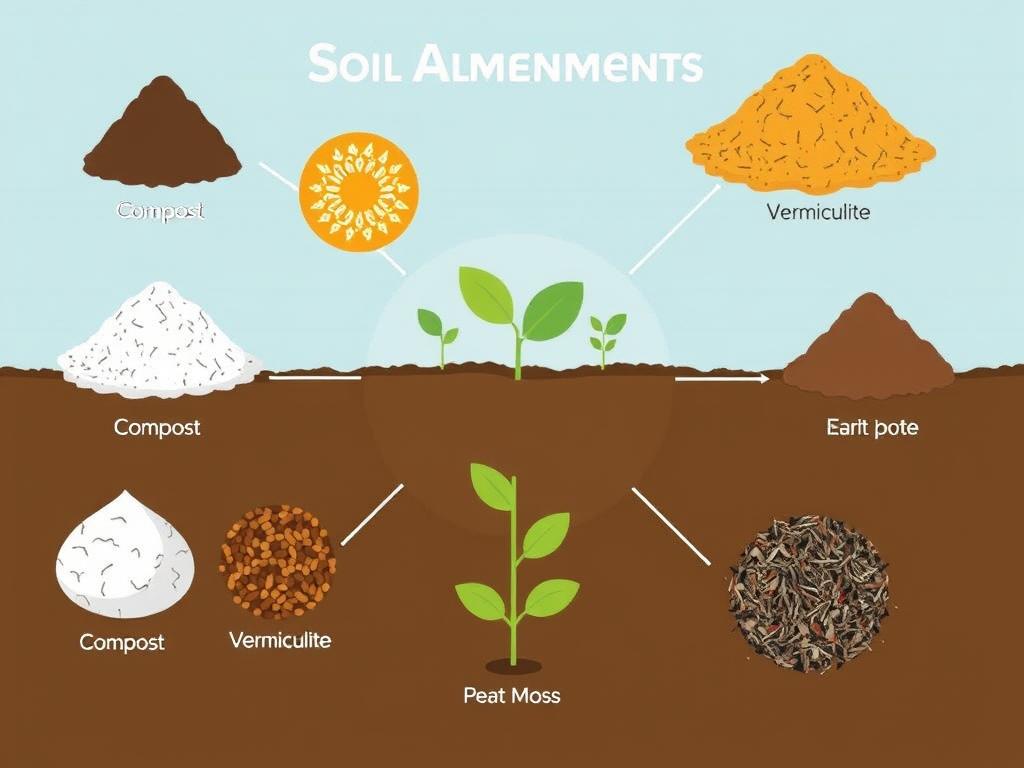
Compost: The Universal Soil Improver
Compost is considered the ultimate soil improver due to its ability to enhance soil structure, fertility, and overall health. It adds beneficial microorganisms, improves soil’s water-holding capacity, and provides a slow release of nutrients.
Organic Matter: Leaves, Grass Clippings, and More
Incorporating organic matter such as leaves and grass clippings into your soil can significantly enhance its fertility and structure. These materials are rich in nutrients and help support beneficial microbial activity.
Mineral Amendments: Lime, Gypsum, and Rock Dust
Mineral amendments like lime, gypsum, and rock dust play crucial roles in adjusting soil pH, improving soil structure, and providing essential micronutrients. Lime is used to raise soil pH, while gypsum helps improve soil structure without affecting pH.
Natural Fertilizers for Nutrient-Rich Soil
Natural fertilizers, including animal-based (manure, bone meal), plant-based (alfalfa meal, seaweed), and mineral-based (rock phosphate, greensand) options, offer a range of nutrients for your vegetable garden. Understanding the NPK ratio and matching fertilizers to your soil’s deficiencies is crucial.
When selecting natural fertilizers, it’s essential to consider the specific needs of your vegetables and the current nutrient levels in your soil. The NPK ratio indicates the fertilizer’s nitrogen, phosphorus, and potassium content, helping you make informed decisions.
Maintaining Healthy Soil Throughout the Growing Season
Healthy soil is the backbone of a thriving vegetable garden, and maintaining it requires attention to several key factors throughout the growing season. Your soil’s health directly impacts the health and productivity of your plants.
Mulching Techniques for Soil Health
Mulching is a simple yet effective way to maintain soil health. By applying a layer of organic mulch around your plants, you can retain moisture, suppress weeds, and regulate soil temperature. This creates a more favorable environment for beneficial soil organisms to thrive.
Watering Practices That Protect Soil Structure
Proper watering practices are crucial for maintaining soil structure. Avoid overwatering, which can lead to soil compaction and erosion. Instead, opt for deep, infrequent watering sessions that encourage deep root growth and minimize soil disturbance.
Mid-Season Fertilizing and Amendments
Some vegetables, particularly heavy feeders, benefit from additional nutrients during the growing season. Consider using compost tea or liquid fish emulsion as part of your mid-season fertilizing strategy. These organic fertilizers provide essential nutrients without the risk of chemical burn.
| Fertilizer Type | Nutrient Content | Application Method |
|---|---|---|
| Compost Tea | Rich in beneficial microbes and nutrients | Soil drench or foliar spray |
| Liquid Fish Emulsion | High in nitrogen, phosphorus, and potassium | Soil drench |
Troubleshooting Common Vegetable Garden Soil Issues
A healthy vegetable garden relies on good soil quality, and knowing how to identify and fix common soil problems is essential for gardeners. Various issues can arise, impacting plant health and productivity.
Dealing with Compacted Soil
Compacted soil can prevent proper drainage and root growth. To address this, use a fork to gently loosen the soil without damaging its structure. Incorporating organic matter can also help improve soil aeration and water penetration.
Solving Drainage Problems
Poor drainage can lead to waterlogged soil, which can be detrimental to plants. To solve drainage issues, consider adding organic matter like compost or well-rotted manure to improve soil structure.
Correcting pH Imbalances
Soil pH affects nutrient availability to plants. Testing your soil pH regularly can help identify imbalances. Adjusting soil pH involves adding lime to raise it or sulfur to lower it, depending on the specific needs of your garden.
Addressing Nutrient Deficiencies
Nutrient deficiencies can impact plant growth. Using balanced fertilizers and incorporating compost can help address these deficiencies. Regular soil testing is crucial to identify specific nutrient needs.
Managing Soil-Borne Diseases and Pests
Diseases and pests in the soil can significantly affect garden health. Healthy, biologically active soil naturally suppresses many diseases and pests. Practices like crop rotation, proper spacing, and using resistant varieties can reduce disease pressure. Beneficial organisms in healthy soil help control pathogens and pests. Organic approaches, such as introducing beneficial microbes, can manage soil-borne problems when they occur.
Conclusion: Nurturing Your Soil for Long-Term Garden Success
Nurturing your soil is a continuous journey that pays dividends in your garden’s productivity. As you’ve learned, creating and maintaining healthy vegetable garden soil is an ongoing process that requires attention and care. The key principles involve understanding your soil type, amending it as necessary, and replenishing organic matter regularly.
Investing time in your soil’s health is the most critical factor in achieving long-term success in your garden. Different gardens require tailored approaches based on their unique conditions, climate, and the types of vegetables grown. By observing your plants and soil closely, you can make informed decisions about soil management.
Remember, building soil is not just about growing better vegetables; it’s about creating a sustainable, regenerative garden ecosystem. This process takes patience, as truly excellent garden soil develops over years of attentive care. As you continue to tend to your soil, you’ll find that it’s a rewarding journey that enhances not just your raised beds or garden beds, but your overall gardening experience.

